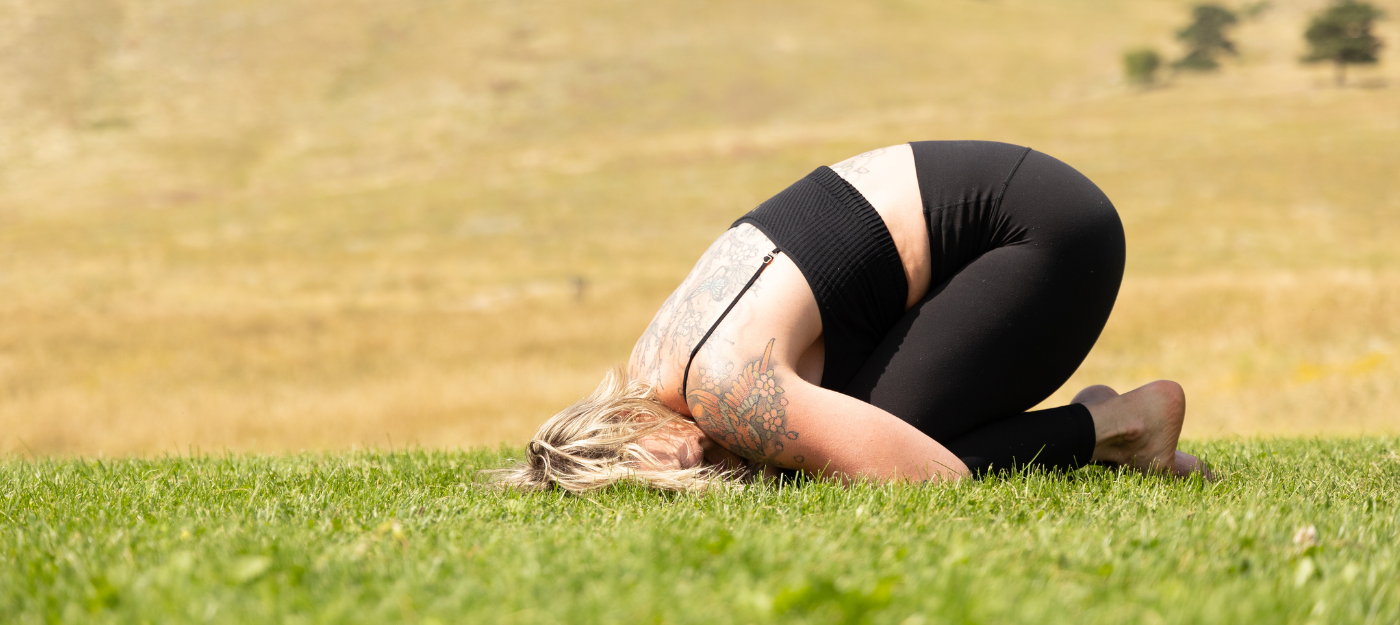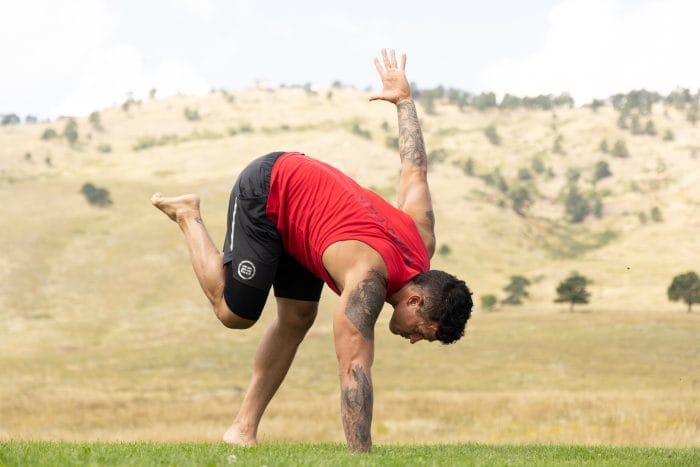
Finding Motivation to Move
Positive habit change is rarely linear. Some days, you might feel like it’s easy: willpower and confidence come freely and you’re kicking goals like a champion. On others, even the idea of donning your workout gear can feel next to impossible.
On the quest for improved health and fitness, it’s not uncommon to take two steps forward and one step back, sometimes over and over again. But you’re not alone. Even some of the world’s top athletes have days where they would rather eat ice cream in their pajamas than go for a workout.
Motivation = life
Motivation refers to the energizing of behavior in pursuit of a goal. Anything that requires motivation leads to a goal that, when reached, provides us with a reward of some kind.
When we use the term ‘motivation’ we typically do so with reference to things we consciously set out to achieve: go to the gym, win the award, complete the task.
Yet, as with all animals, motivation is present in every aspect of our daily existence. Anything we need to secure in order to survive (such as food, water, shelter, and social interaction) is obtained as a result of our motivation.
It’s imperative that our motivation levels are balanced. Too little motivation and we don’t obtain what we need, when we need it. Too much, and we’re driven to seek out more than we need, more often, and at potentially unsuitable times.

Managing motivation levels successfully requires balance.
Types of motivation
The in-depth study of motivational psychology has birthed many theories and models that attempt to explain how we’re motivated. Everyone is moved to action through a range of contributing biological, psychological, environmental and social factors.
According to Self-Determination Theory, we all have an in-built psychological need to have:
- The freedom to choose what we do (Autonomy)
- The belief that we can accomplish something (Competence); and
- A sense of belonging and connectedness with others (Relatedness).
These factors all impact our levels of motivation when it comes to becoming, and staying, physically active.
We’re each motivated in different ways, by different things. Some people are energized to take action simply because they feel internal satisfaction from a particular activity. This intrinsic style of motivation often leads to sustainable behavior change because we are engaging in things we naturally enjoy and want to do.
Others find that perceived rewards that come from outside themselves (such as money, status, acclaim or avoiding others’ disapproval) help them to stay on track. This external, or ‘extrinsic’, motivation can be broken down into four types:
- Integrated Regulation: This is the most self-determined type of extrinsically-motivated behaviour as it relates to the way that the goal connects to our identity and values. Perhaps you practice handbalancing because the commitment it requires speaks to your personal values — this is an example of integrated regulation.
- Identified Regulation: You may not really want to work on those boring bodyweight basics but you do so because you know that the benefits will ultimately contribute to bigger achievements. This is an example of identified regulation.
- Introjected Regulation: If you’ve ever exercised because you felt that you should, you’ve experienced introjected regulation — an internalized motivation towards something that you don’t actually support or believe in.
- External Regulation: This occurs when someone performs an action for recognition and validation from other people.
Which type of motivation is best for health and fitness?
Despite what you might imagine, research suggests that intrinsic motivation is not necessarily the most important predictor of a long-term exercise habit.
As the most self-determined form of extrinsic motivation, Integrated Regulation is believed to lead to greater regular exercise engagement because it connects us to who we are and who we want to be. We’re more likely to keep doing a thing if we feel it aligns with our values and reinforces our identity.
So, when it comes to choosing a form of physical activity that you’re more likely to stick with, don’t be afraid to try a range of different things to find what you enjoy and matches your values.
What to do when you’re feeling unmotivated
Start slow
‘Hustle culture’ has led us to believe that the answer to low motivation is to grind, all day, every day, at all costs, no matter how you feel. While that approach may work for some, Maddie Berky, Animal Flow Master Instructor from Los Angeles, CA., USA says that it’s normal, healthy and completely ok for that to not resonate with you.
“Motivation is hard,” emphasizes Maddie. “Especially in the last few years when everything feels heavy. I’ve noticed that how I move my body has totally changed, partly because I’m not ‘motivated’ to lift heavy things real fast anymore. My brain is trying to deal with all the heaviness of the world, and so picking up a barbell hits my hard-things-ceiling.
“I’ve started to allow myself to follow the path of least resistance. Don’t feel like moving? Great, how about we start in child’s pose and then see what happens?

Certified Instructor Aida Khusnutdinova takes it slow outdoors.
“At first, this felt like the opposite thing I should do (and if I’m being honest, it still kind of does). Wasn’t the best thing I could do, the hardest, toughest, leaves-me-collapsed-on-the-floor thing?!
“I think this is BS. And it’s also 100% the way we’re raised culturally and in sports/movement. DO THE HARD THING. Otherwise you’re weak and not trying hard enough.
“It’s such a shame-based way of approaching motivation. And shame seems like it’ll work, it’s hot and fast, but it’s not sustainable. And you know what, sometimes simply getting into child’s pose is hard enough.”
Focus on what a single session can do
Like brushing your teeth or eating healthily, physical activity is something that’s best performed regularly in order to take full effect. It makes sense, therefore, that when we talk about physical activity, we often focus on the long-term, accumulated benefits. Yet, when you’re in the midst of a motivation lull, focusing exclusively on the long-term can feel exceptionally difficult at times.
A single or acute bout of exercise can have immediate positive benefits.
1. Improved cognitive function that lasts for up to two hours after you finish exercising, such as:
- Problem solving abilities
- Attention
- Working memory (the ability to work with information temporarily without losing track of wider tasks)
- Prospective memory (the ability to remember to do things in the future that you intend to do)
- Decision making
- Verbal fluency (the ability to retrieve information from your memory)
- Inhibitory control (the ability to suppress any stimuli or action that is not relevant to the task or goal at hand)
2. Improved mood
3. Decreased stress levels.
Focusing on immediate benefits such as these is what Australian Animal Flow Master Instructor, Alisha Smith, finds helps her when she’s tempted to skip a session:
“I have a tendency to be an ‘all-or-nothing’ person so I find it really easy to get derailed by working long days when I’m deep in a project. I’ve learned that I have to schedule the session or task in my calendar so that I don’t just stay glued to my computer.
“Rather than writing, ‘Go to the gym’ (which positions it as a chore), I label the appointment something like, ‘Brain break at the gym.’ Doing this reminds me that the workout is a reward that will also have a positive impact on my work. And aside from the big sessions, my calendar is punctuated with 10-min movement breaks after a 90-min work block.”

Interview yourself
Freddy Satizabal, Animal Flow Master Instructor from Miami, FL. USA, knows that feeling like doing something is rarely enough to stay the course when it comes to achieving his goals.
“A deep desire to quit, stop, and skip the day is a part of the process,” explained Freddy. “When that happens I like to put the best version of myself in the spotlight and ask, ‘What does that version do?’ and ‘How often am I feeling this way?’ Then I manage the balance. Knowing when it’s time to pass on a training session based on facts and information, and not on how I feel, has always served me well.”
Getting clear on what underpins your waning motivation can be a valuable tool for removing ambivalence.
1. Ask your past self for advice. Think back to a time when your motivation was high and you were engaging in the very behavior that you want to reinstate now. What advice would you give yourself to move through this period of demotivation?
2. Find the root cause. For Master Instructor Eve Kabanova, accepting low motivation and using it as a source of self-inquiry has proven to be helpful. “ I try to understand the reason. I ask myself, ‘Why do I feel this way? What has happened recently that has influenced me in a negative way? Or do I just need to take a break?’ I try to find the right answer and fix it.”
Quick tips for mustering motivation
Kathy Donatto
Master Instructor, Miami, FL., USA
“What gets me motivated is nature. Either going to the beach looking at the ocean, or I go to a field filled with beautiful old trees. I usually start working out while I’m there. These are my happy places. Also being around positive, like-minded people. Judging at a recent fitness competition was a huge motivational push.”
Jeseung Lee
Master Instructor, Seoul, Korea
“I try to forget the idle thoughts. When I don’t feel motivated I go for a walk or sleep.”
Michael Palser
Master Instructor, Ft. Collins, CO., USA
“In my mind, in many ways, success comes from discipline. Discipline is doing what needs to be done even when you don’t feel like it. Discipline is doing the things you don’t want to do, like you LOVE it. Become a master of re-routing your mentality. Most times, the best sessions, or learning moments come from a session you don’t ‘feel’ like doing.”
Roshan Chopra
Master Instructor, Toronto, Canada
“What kept me motivated when I was an acrobat at Cirque Du Soleil was the knowledge that there was always someone looking for my job. If I didn’t stay ahead of them, I wasn’t eating. What keeps me going now is something one of my favorite coaches used to tell us when we were dragging ass: ‘Today is a good day to fight.’ This simply means that if you can handle a slow or bad day today, think about how easy a good day will be for you when you compete.”
Watch We Invite You to Move, a mini-documentary that explores free movement styles and the concept of flow. No matter what type of sport or movement interests you, we invite you to move. It doesn’t matter what your current skill or fitness level is – just find something you like and get started.
